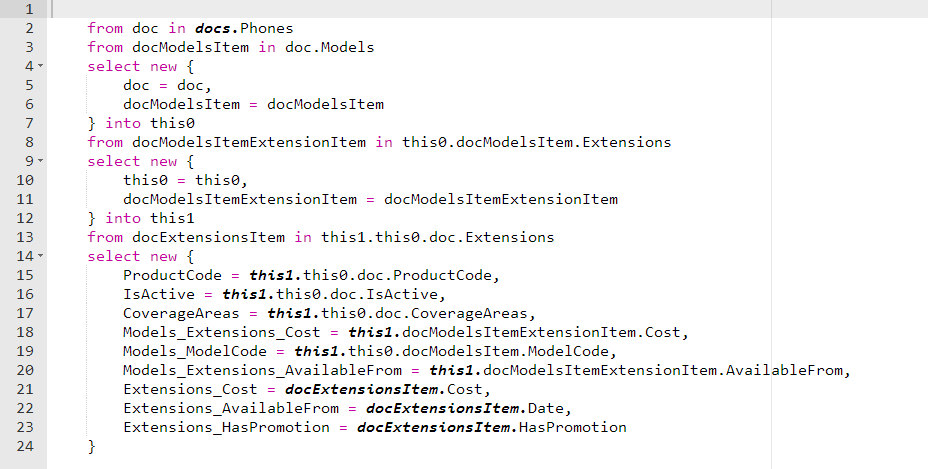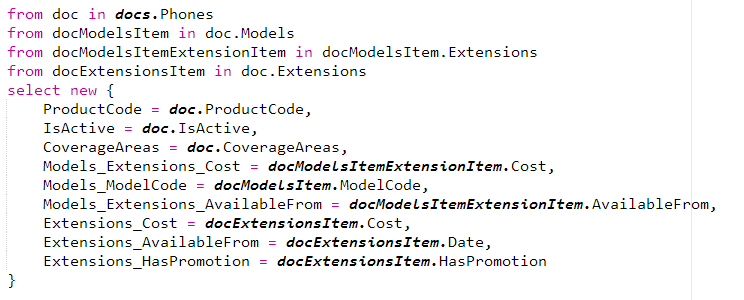Complex indexing, simplified
RavenDB indexes are Turing complete, which means that you can do whatever you want with them. This is a very powerful feature, but it also come with a heavy burden. You can get yourself into some serious trouble. Take a look at this index:
We run into it during a troubleshooting session with a customer. And it was frankly quite hard to figure out what was going on.
Luckily, I could just throw this into RavenDB 3.0, and look at the indexing options:
This turned the above index into this:
Which was much clearer, but we could improve it a bit by removing the into clauses, so I ended up with:
Now, just from the following, can someone tell me what is the likely issue with this kind of index?










Comments
The cardinality could get rather large?
Cartesian product.
1 update to any of the collections requires a full run through all permutations of the data...
i.e. cartesian join :)
@Ayende,
Would you say the error lies between keyboard and chair (user error ;-) ) or just a bad data model? Their intent looks okay on the surface with the model they have.
What would be interesting is in this sort of situation - where the data model could be improved, what are the steps you should take to co-ordinate the patching, code changes and deployment to manage such a change.
Its one thing to have a bad data model and have good intentions to fix it, but its another to know how to approach this sort of problem.
Dominic, Yes, that is the issue. And to resolve it you can split it into multiple maps, so the work doesn't have to be multiplied by each level.
Could we please have some code to show how it should be remodelled, please?
Pure Krome, I don't understand the question
Ah. I mean this..
some code to explain this answer.
(I know some of us noobs still need help with this).
Pure Krome,
The issue is this:
// index #1
Assume you have 10 phones, with 10 models each with ten extension per model and 10 extensions per phone. The output from this index is:
10 (phones) x 10 (models) x 10 (extensions per model) x 10 (extensions per phone)
Gives us a total of: 10,000
// index #2 // map #1 from doc in docs.Phones from docModelItem in doc.Models from docModelItemExtensions in docModelItem.Extentions
// map #2 from doc in docs.Phones from docExtensions in doc.Extensions
Then you have:
10 (phones) x 10 (models) x 10 (extensions per model) + 10 (phones) x 10 (extensions per phone)
Gives us a total of 1,100 results.
Comment preview